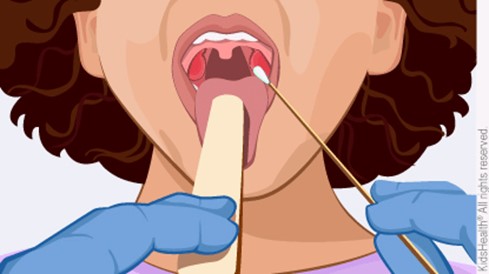The nurse is assessing a client experiencing acute pain.
What assessments should validate the client with acute pain? Select all that apply.
Restlessness.
Dilated pupils.
Constricted pupils.
Diaphoretic skin.
Increased respirations.
Decreased respirations
Correct Answer : A,D,E
These choices validate the client with acute pain because they are signs of a sympathetic nervous system response to pain. Acute pain is a sudden and usually sharp sensation that indicates tissue damage or injury.
Choice B is wrong because dilated pupils are not a sign of acute pain. Pupils may dilate in response to fear, excitement, or drugs.
Choice C is wrong because constricted pupils are not a sign of acute pain. Pupils may constrict in response to bright light, drugs, or brain damage.
Choice F is wrong because decreased respirations are not a sign of acute pain. Respirations may decrease in response to relaxation, drugs, or respiratory depression.
Nursing Test Bank
Naxlex Comprehensive Predictor Exams
Related Questions
Correct Answer is A
Explanation
This is the proper way to obtain a throat culture, which is a test to look for infections in the back of the throat.

Some possible explanations for the other choices are:
Choice B is wrong because there is no need to avoid eating or drinking after a throat culture.
The swab does not interfere with the normal function of the mouth or throat.
Choice C is wrong because coughing while swabbing the throat could contaminate the sample or cause discomfort to the client. The swab should be gently passed along the back area of the throat and tonsils.
Choice D is wrong because swabbing only the anterior tongue would not collect enough cells from the infected area. The swab should reach the back of the throat where bacteria or fungi may grow.
Correct Answer is A
Explanation
This is because the nurse should first ensure that help is on the way before performing any other actions on an unconscious and unresponsive client. Calling for assistance may also alert someone who can bring an automated external defibrillator (AED) if needed.
Choice B is wrong because giving 2 rescue breaths is part of CPR, which should only be done after checking for a pulse and finding none or a weak one.
Giving rescue breaths to a client who has a pulse may cause harm.
Choice C is wrong because checking for apical pulse is not the most reliable way to assess circulation in an emergency situation. The nurse should check for a carotid pulse instead, which is easier to locate and more indicative of blood flow to the brain.
Choice D is wrong because beginning chest compressions is also part of CPR, which should only be done after calling for assistance and checking for a pulse and finding none or a weak one.
Chest compressions may cause harm to a client who has a pulse.
Whether you are a student looking to ace your exams or a practicing nurse seeking to enhance your expertise , our nursing education contents will empower you with the confidence and competence to make a difference in the lives of patients and become a respected leader in the healthcare field.
Visit Naxlex, invest in your future and unlock endless possibilities with our unparalleled nursing education contents today
Report Wrong Answer on the Current Question
Do you disagree with the answer? If yes, what is your expected answer? Explain.
Kindly be descriptive with the issue you are facing.
